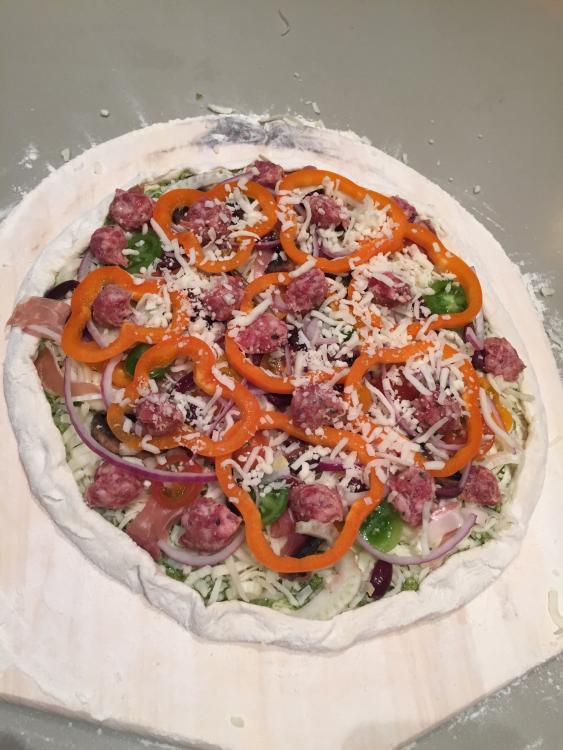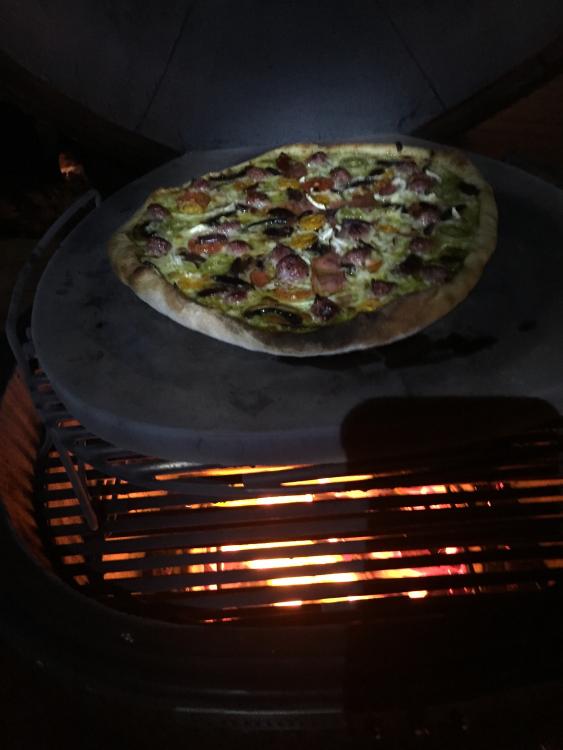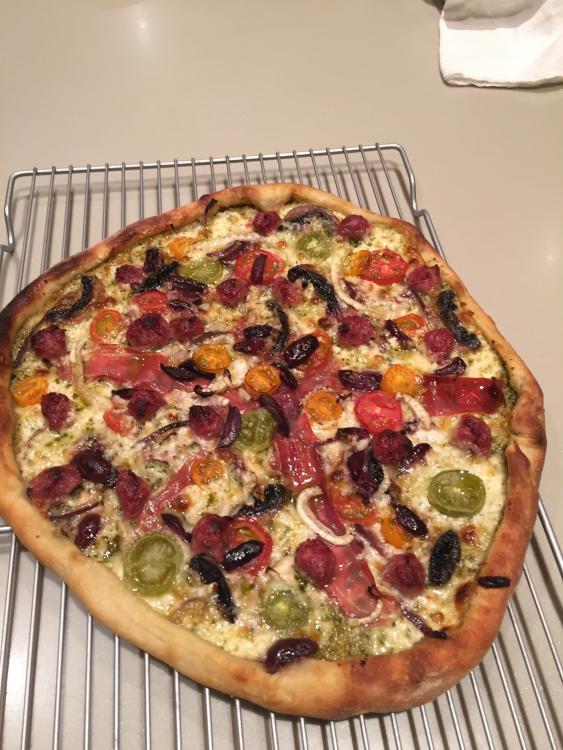Search the Community
Showing results for tags 'pizza stone'.
-
I have a 23” kk. Just finished the curing process and want to make a pizza for my first cook. I have a pizza stone (which looks exactly like the heat deflector). Do I need to use the heat deflector when cooking the pie?
- 10 replies
-
- heat deflector
- pizza
-
(and 1 more)
Tagged with:
-
Quick question - had an issue with previous pizza stones that just started from long after a couple uses. Dennis awesomely replaced it but before I use For the first time Im checking To see if there’s anything I need to do before use, I noted the new one haze glazing on one side. regards.
-
Hello fellow KK aflicted home cooks, I've been experimenting with Pizza using my sourdough starter as the base and am starting to get some rather good results, IMHO thought that I would share my technique and see what refinements others may have to offer. My sourdough starter has been 'alive' for about 10 years now. It is an excellent base for sour batard, baguettes and numerous other rustic breads so I thought "Why not make a pizza?" If you have access to a sourdough starter, my dough building recipe is as follows, yield is about 3 pizza's with a medium thin crust. These are not Napolitano style pizzas, those I have yet to attempt due to difficultly getting the pizza to slide off my peel with the amount of ingredients I like to put on them. So think 'thin crust' pizza here. for the Dough Combine these ingredients in a bowl and mix/knead into a dough ball and knead it until it has formed a good gluten structure and looks Silky (2 minutes on medium speed in a kitchenmaid mixer with a dough hook is about right for me): 8 oz. Sourdough starter at (166% hydration) Add 9 oz. fresh water 18 oz (by weight) bread flour 1/3 oz Olive oil Let the dough rest for about an hour, then knead in (by hand) about 3/8 oz. of salt (use good salt like Pink Himalayan Salt). Salt inhibits the gluten formation of the dough, so it is best to let the gluten form without salt and then knead in after the dough fully hydrates by sitting for the mentioned hour. If you don't have an hour 30 minutes is fine. Once the salt is kneaded in, form a ball and place into a Stainless steel bowl to rise. Depending on how vigorous your starter is and the temperature of your environment, you will then wait till the dough doubles. Then you can portion into smaller balls of dough ( i used 12 oz. per pizza crust) to complete their rise (again doubling) before you form your crusts. I roll mine out on a floured wooden peel to about 14" in diameter, roughly 1/8" thick. Obviously it is easier to make the dough a day before. In this case after you knead in the salt, you can put the dough ball into an oiled Stainless steel bowl, cover with plastic wrap and then place it into your refrigerator. Then when you get up in the morning, you can take the amount of dough you want to use for tonight's bake, form a ball and let it come up to temperature and rise. It will rise a surprising amount in the refrigerator overnight believe it or not. You can hold this dough in the refrigerator for up to a week and it just gets better with age. At some point you will find that the dough is fully risen in the fridge and you must then use it, but it takes a long time and the sourness of the dough increases as it "ferment's" under refrigeration. KK preheating regimen is as follows: Fill charcoal basket and light in 3 locations equidistant from each other. Use the upper grate with the sear grate with pizza stone on top, (longer legs bearing on the upper grate so the pizza stone is way up in the lid dome. This keeps the shorter handles upward facing and the stone rides at about that height. open from draft and rear clean out door so lots of air is flowing. Dome lid is screwed open about 3 revolutions allowing for free flowing draft. It takes my KK, a 23 OTB about 90 minutes to heatsoak the stone to 400- 425 degrees. I have found that any temp of 450 will cook the crust faster than the toppings resulting in too much char for my taste. If you have fewer toppings you can use a thinner crust (Napolitano style) and cook at higher temperature resulting in a cracker like crust, but I've not yet achieved consistency with this style of pizza. To build my favorite pizza I use the following: Pesto for the sauce lightly coating the area of crust to be topped. then I add Fontina and mozzerella cheeses, Sliced Mushrooms, sliced red onion, sliced fennel bulb, slice kalamata olives, thin strips of prosciutto, small balls of Mild Italian sausage, rings of Bell pepper and that is about it. once toppings are in place, I roll the edges to keep the sauce and cheese from running off the edges (about 13" in diameter now) and take the wooden peel with the pizza to the KK at 425 degrees. I use a steel peel to make sure that the crust is adequately loosened from he wooden peel then place the wooden peel on the stone and gentle shake the pizza off the wooden peel using the steel peel to help it along onto the stone. It generally takes about 7 minutes to really set and hold shape, then I use the steel peel to rotate the most cooked side of the pizza to the area where the pizza is least cooked, this keep the pizza cooking evenly. I am basically rotating the pizza on the stone to balance out the browning of the crust. A raw pizza, cooking pizza and some results are attached below. I think they are the best Pizza's I've ever had, but I know there is always room for improvement. Let me know if you have any tips or tricks that I can try to improve the results. I assure you that the crust is better than most folks can imagine! Buon Appetito!
- 8 replies
-
- 2
-

-
- pizza stone
- pizza
-
(and 1 more)
Tagged with:





.thumb.jpg.ecfe4914522fceaeec29e4905d0c7564.jpg)
.thumb.jpg.fc64ba425837ff6f6aeea1d32927219f.jpg)